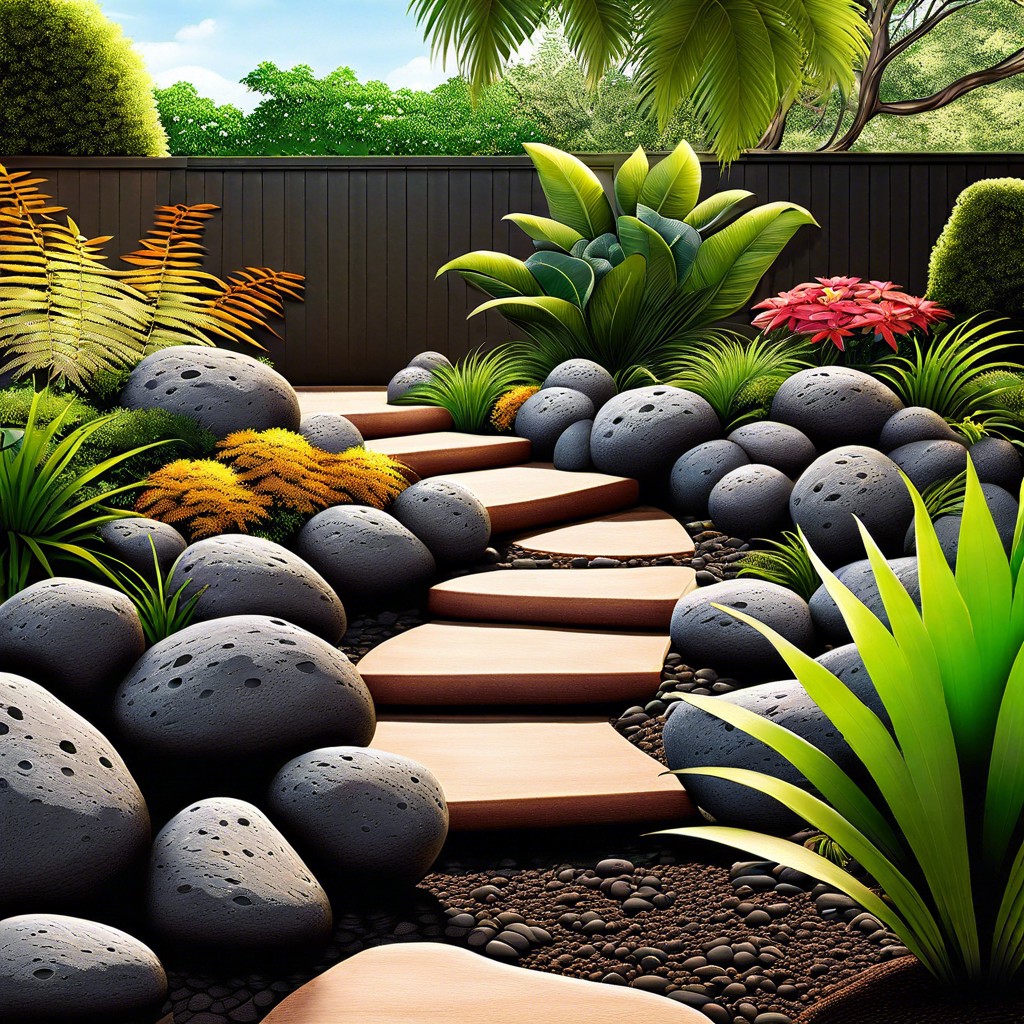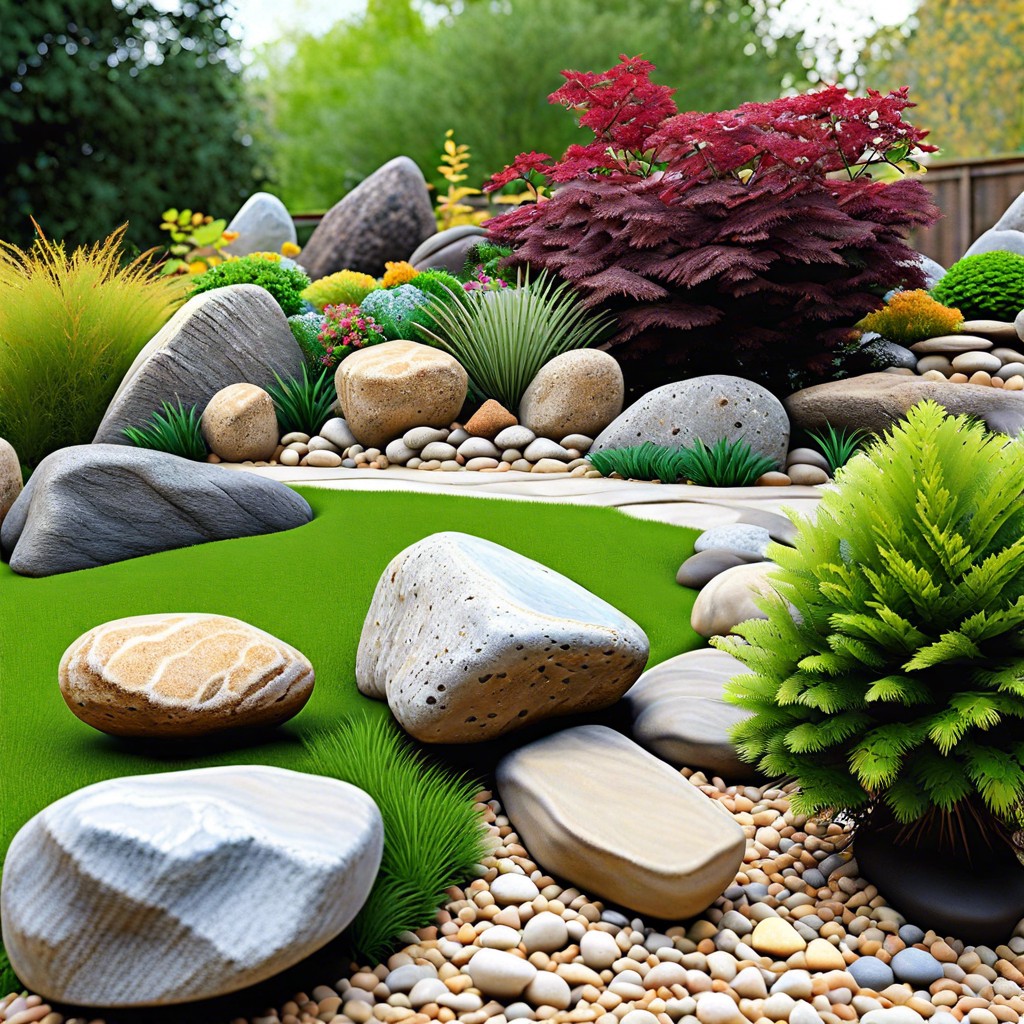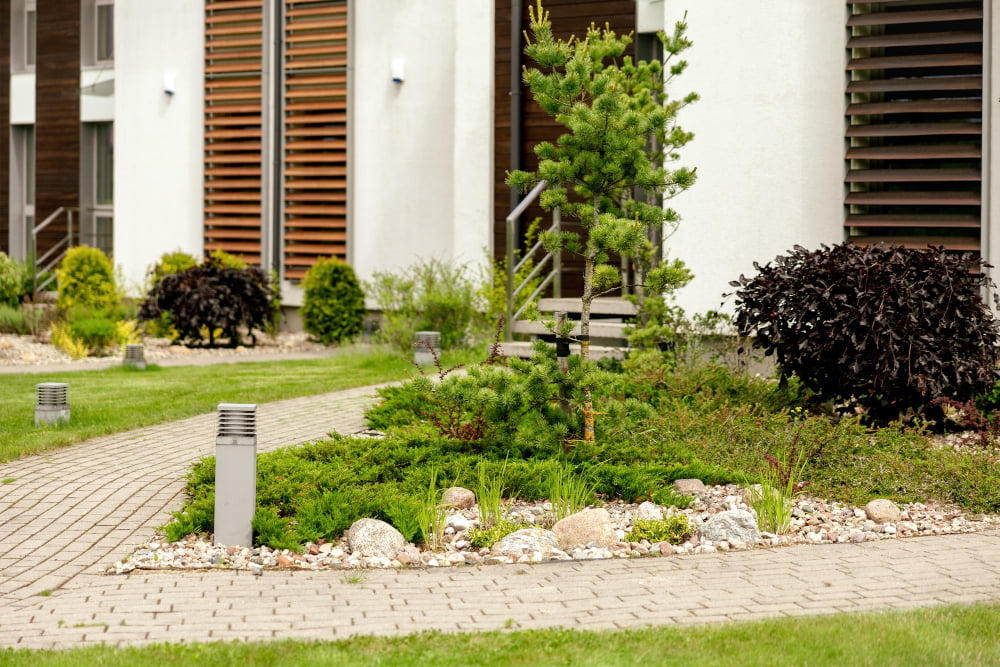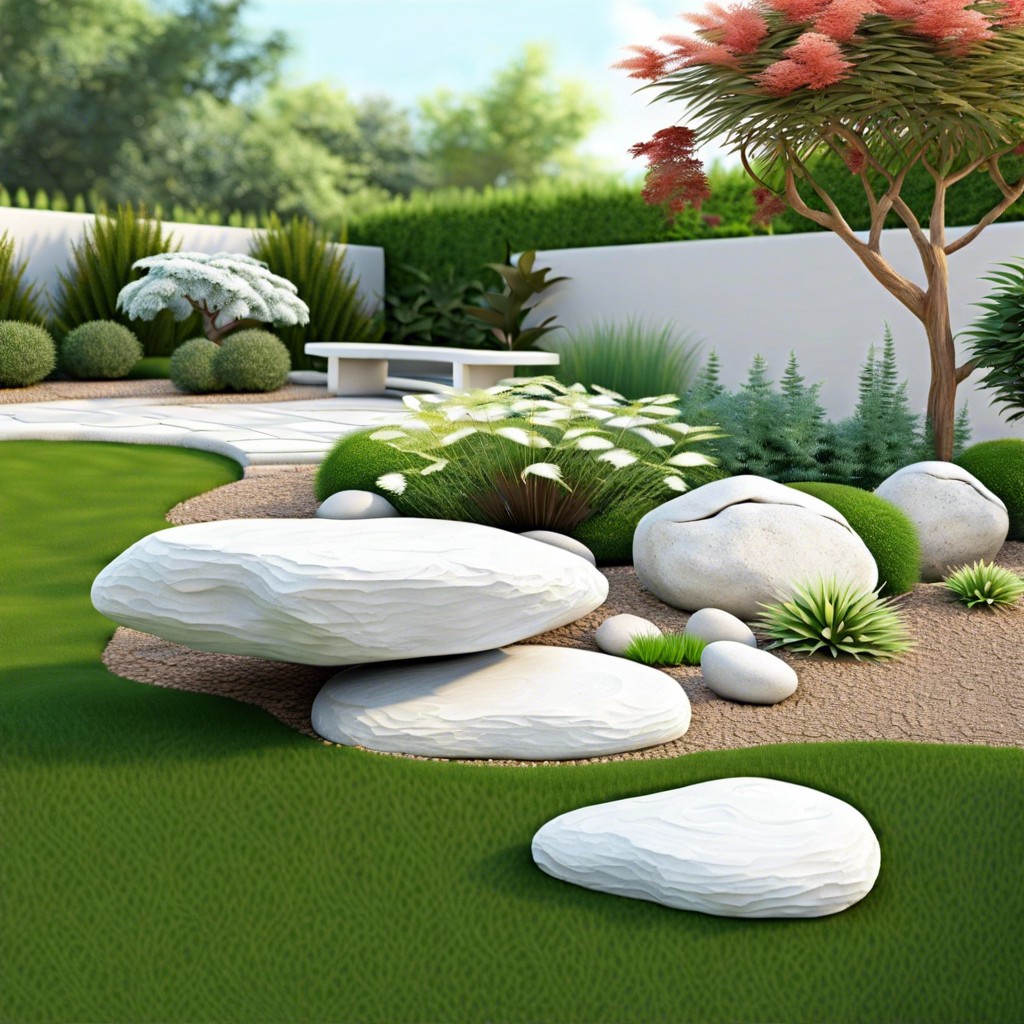Discover the best types of black rocks to enhance your landscape aesthetics, where to find them, and how to select the perfect variety for your garden in this comprehensive buying guide.
Key takeaways:
- Black rocks offer visual contrast and define garden spaces.
- They provide thermal benefits and deter weed growth.
- Black rocks are durable, cost-effective, and environmentally sustainable.
- Use black rocks to accentuate pathways, water features, and focal points.
- Maintain black landscaping rocks by cleaning, preventing weed growth, and rearranging as needed.
Types of Black Rocks for Landscaping
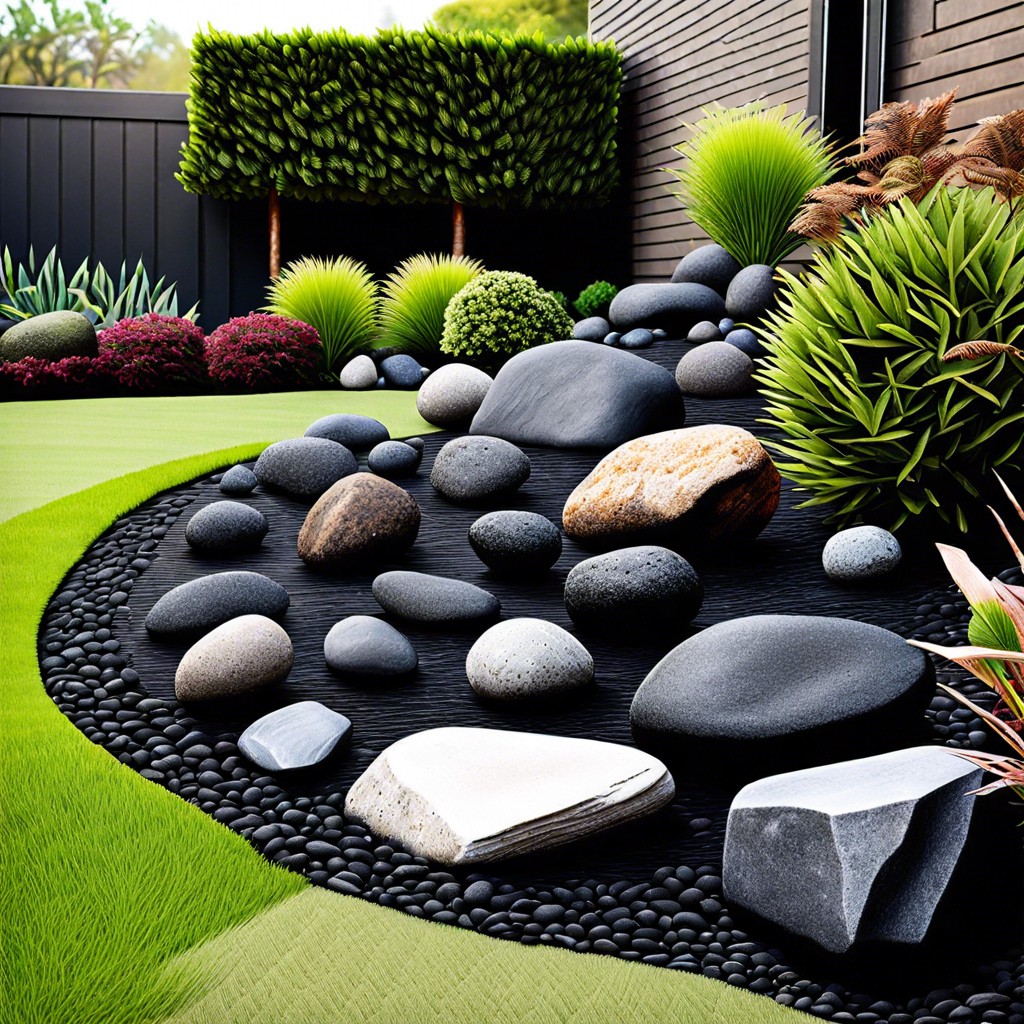
Black lava rock, known for its porous texture and stark color, is a popular choice that also improves soil drainage and helps retain moisture.
Obsidian, a naturally occurring volcanic glass, adds a sleek and modern touch with its smooth surface and deep sheen, making it ideal for contemporary gardens.
Basalt, rich in iron and magnesium, is characterized by its fine-grained texture. Its durability makes it excellent for high-traffic areas.
Black gravel, often made from crushed basalt or other dark minerals, is versatile for paths and driveways with its varied sizes that compact well.
Granite, with its speckled appearance due to the presence of different minerals, can lend a luxurious look while offering longevity due to its hardness.
River rock, although more rounded and smooth, provides a contrast in shape while maintaining the color theme, perfect for edging or water features.
Slate chips, with their flat and angular nature, are suitable for a stable walking surface and add an earthy yet sophisticated element to the landscape.
Each rock type not only differs aesthetically but also serves unique functional purposes in a garden. From enhancing soil properties to providing erosion control, these black rocks are as practical as they are beautiful. When selecting, consider both the visual impact and the benefits they will bring to your outdoor space.
Benefits of Using Black Rocks in Landscaping
Black rocks offer an array of advantages for garden spaces, affirming their popularity among landscaping aficionados. They provide a striking contrast that can make both foliage and flowers pop, especially vibrant greens that seem lusher against the dark backdrop. This color contrast is not only aesthetically pleasing but also helps define spaces within your garden, creating visual boundaries that can organize and highlight garden beds.
Beyond their visual appeal, these rocks bring practical benefits. They absorb heat during the day and release it at night, which can create a microclimate beneficial to certain plants. Their heat-retention properties also mean they can help to deter weed growth, as the warmer soil temperatures inhibit the germination of unwanted seeds.
Durability is another plus. Unlike organic mulches, black rocks don’t decompose over time, eliminating the need for frequent replenishment. This long-lasting nature means they are cost-effective over the long term, despite typically higher initial costs compared to other landscaping materials.
Additionally, they facilitate drainage, allowing water to flow through and reach the soil while minimizing runoff, especially during heavy rainfall. This can prevent soil erosion while ensuring plants receive the water they need without the risk of root rot.
Environmentally conscious gardeners appreciate that black rocks, especially when sourced responsibly, can represent a sustainable choice. They often require minimal processing and can be locally sourced, reducing transportation emissions. As they are reusable and last for years, they also contribute less to waste compared to temporary landscaping solutions.
In summary, incorporating black rocks into your landscape design is not just an aesthetic decision but one that brings thermal benefits, low maintenance, durability, and environmental sustainability to your garden.
Design Ideas With Black Landscaping Rocks
Incorporating black rocks into your landscape can create a stunning visual impact that highlights the greenery and other features of your garden. Here are a few creative ideas to get you started:
Accentuating Pathways: Line your garden paths with black pebbles to create a striking contrast against the lighter walkway materials. This not only defines the paths but also provides a modern and elegant look.
Water Features: Black rocks are perfect for surrounding ponds or creating the bed of a dry river feature. Their dark color provides a dramatic backdrop that makes the water appear more vibrant and can accentuate the movement in your water feature.
Mulching Alternative: Use smaller black stones as a mulching alternative around plants or trees. Not only do they retain moisture and suppress weeds, but they also add a textural component to your garden beds.
Focal Points: Create a focal point in your garden with a black rock boulder or grouping of larger stones. They can serve as a central feature that draws the eye and can be complemented by surrounding plants with vibrant flowers or foliage.
Highlighting Plantings: Contrast is key in garden design. Placing black rocks around brightly colored plants or those with silvery or golden foliage will make those hues pop even more.
Zen Garden Influence: Taking inspiration from Japanese Zen gardens, use black sand or finely crushed rock to create a peaceful, contemplative space in your landscape. Raked patterns or simple, minimalist arrangements can evoke tranquility.
Remember, black rocks can absorb and radiate heat which may benefit some plants but could be detrimental to others. Position them thoughtfully to ensure they complement your landscape without causing harm to sensitive foliage. With these ideas, black rocks can transform an ordinary garden into an extraordinary space of beauty and elegance.
Maintenance Tips for Black Landscaping Rocks
Keeping your black rocks looking pristine requires some regular care, which will not only maintain their aesthetic appeal but also extend their longevity. Here are a few maintenance tips to ensure your black landscaping rocks remain a stunning feature in your garden:
First, it’s essential to keep them clean. Dust, dirt, and fallen leaves can make the rocks look dull over time. A simple rinse with a garden hose can remove loose debris. For a deeper clean, a mild detergent mixed with water can be used with a soft brush to scrub away any stubborn grime. Be sure to rinse thoroughly afterwards to avoid leaving soap residue.
Another key point is to combat weed growth. While rocks discourage weeds, some hardy varieties can sprout between them. Regularly check for weeds and remove them by hand to prevent them from taking root. For a more preventative approach, consider laying landscaping fabric underneath the rocks to inhibit weed growth.
Over time, the rocks may shift or settle, especially after heavy rain or wind. Periodically, take time to rearrange and level out the rocks to maintain the design and coverage intended for your space.
Lastly, be mindful of fading. The intense sun can cause the color of black rocks to fade over time. To mitigate this, some individuals opt for UV-resistant rock varieties or apply a rock sealant that provides UV protection, keeping the rocks vibrant for longer.
By following these simple care routines, your black landscaping rocks will continue to be an eye-catching element of your outdoor space.
Choosing the Right Size and Color Contrast for Your Garden
Selecting the appropriate size of black rocks for your garden is crucial for achieving the desired visual impact. Smaller pebbles create a uniform look and are excellent for pathways or covering large areas. On the other hand, larger boulders can be used as focal points, evoking a sense of grandeur and natural beauty.
When incorporating black rocks, consider the color contrast they will provide against your existing landscape elements. Light-colored foliage or flowers will pop against the dark backdrop of black stones, creating a dynamic and eye-catching contrast. Additionally, the use of these rocks can highlight specific architectural features or plants, drawing the eye and adding visual interest to your garden.
It’s important to keep balance in mind. Black rocks can be powerful in design, so use them judiciously to avoid overwhelming your space. Strategically placing them amongst greenery can help distribute their bold aesthetic evenly across your garden.
Lastly, think about the long-term appearance of the rocks you choose. Some materials may fade over time when exposed to sunlight, while others maintain their deep color. By considering these factors, you can ensure that your black rocks will continue to complement your garden’s look for years to come.
Also interesting:
